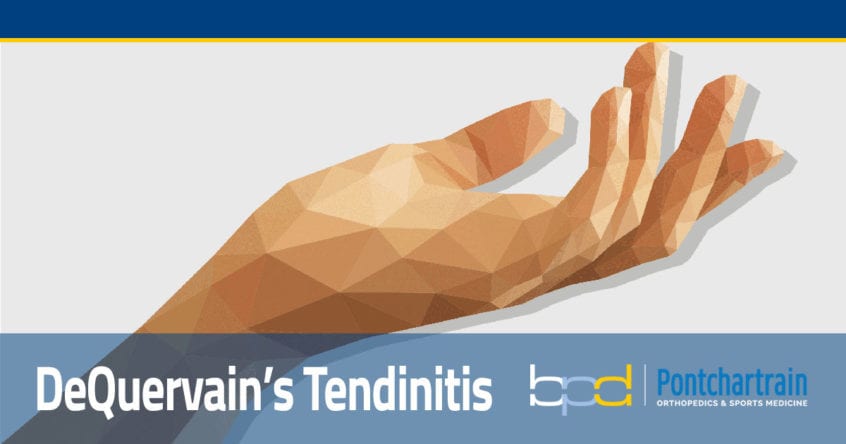What is De Quervain’s Tendinitis?
De Quervain’s Tendinitis, also referred to as De Quervain’s Tenosynovitis, occurs when the tendons on the thumb side of the wrist are overused and become irritated or constricted. Typical symptoms of De Quervain’s Tendinitis include:
What Causes De Quervain’s Tendinitis?
De Quervain’s Tendinitis often occurs due to activities like gaming, gardening, tennis, or workplace activity. Anyone who frequently overuse their wrists can develop this condition. It is common in new mothers due to regularly grasping and lifting their babies. It is also found in middle-aged women and those suffering from diabetes, rheumatoid arthritis, and other inflammatory conditions.
How is it Diagnosed?
To diagnose De Quervain’s Tendinitis, Dr. Donnelly begins with a physical examination. The patient may be asked to perform a “Finkelstein Test,” which involves making a fist around the thumb and bending the wrist towards the pinky finger (ulnar deviation). If the patient experiences pain during this test, they may be suffering from De Quervain’s.
Treatment Options
Mild to moderate cases of De Quervain's Tendinitis are treated using nonsurgical methods. Severe cases may require surgical intervention.
Non Surgical
Mild cases of De Quervain’s Tendinitis may be treated with:
Surgical
If symptoms are severe or do not improve through non-surgical means, then surgical treatment may be required. Surgery for De Quervain’s Tendinitis involves surgically opening the thumb compartment to alleviate pressure on the affected tendons of the wrist.
De Quervain's patients who do not want to or are unable to undergo general anesthesia—either due to age and/or other medical issues—may be good candidates for wide awake hand surgery, or WALANT.
Recovery Time
Recovery time will depend upon the severity of the condition. Non-surgical methods usually treat De Quervain’s Tendinitis within four to six weeks. Recovery time will be longer for those who undergo surgery, as the wrist will likely require physical therapy about six to eight weeks following surgery.

